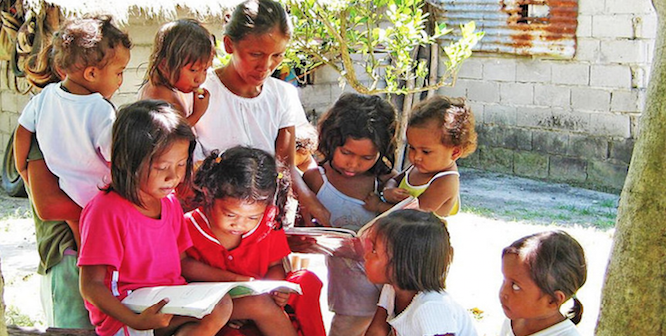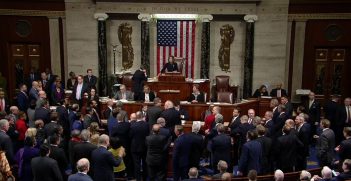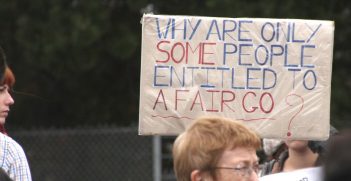A Human Rights-Based Approach to Education

Since the 1990s there has been a growing consensus on the link between human rights and development and the need to incorporate human rights norms into poverty reduction strategies. This has culminated in the establishment of a human rights-based approach to development.
A human rights-based approach (HRBA) is one which systematically applies the values, principles and standards contained in international and national human rights law to all aspects, both substantive and procedural, of the development process. In this way, it redefines the nature of the development problem; underlining the multi-dimensional nature of poverty, targeting the root causes of the poor’s deprivation and expanding the range of responses. By doing so, it has the potential to address, and provide resilience to, the structural vulnerabilities and insecurities felt globally by the poorest and most marginalised.
To use education as an example, most international attention has been focused on helping children get into school, but the current education crisis is not simply the rates at which children attend school. The crisis is multi-dimensional: not only must children have access to school, they need to be taught a quality curriculum and complete all years of schooling. Most importantly, all children must have equal access to education in a non-discriminative atmosphere – this is what an HRBA advocates for.
A foundation in human rights promotes democracy and social progress. For education this equates to the development of a school environment in which children know their views are valued, where the focus is on respect for families and the values of the society within which they live. This promotes understanding of cultural diversity and can serve to strengthen social cohesion.
An HRBA is founded on principles of peace and non-violent conflict resolution: schools and communities must create learning environments that eliminate all forms of physical, sexual or humiliating punishment by teachers and challenge all forms of bullying and aggression among students. The lessons children learn from school-based experiences in this regard can have far-reaching consequences for wider society. An HRBA also produces better outcomes for economic development. By promoting universal access to education and overcoming discrimination against girls, children with disabilities, working children, children in rural areas and minority and indigenous children will serve to widen the economic base of society, thus strengthening a country’s economic capability.
One of the biggest contributions an HRBA makes in implementing the right to education is the fact that it seeks to target the underlying root causes of barriers to education, moving beyond access. Here, a look at gender equality in education provides the best example of an HRBA addressing rights to, in and through education.
Previous development policies that attempted to remedy the unequal enrolments of girls have focused on barriers to access. These included increases in the availability of schools and access to them, and inducements to parents to send their daughters to school, alongside a requirement on schools to enrol a certain number of girls, establishment of special schools for girls, and the recruitment and training of female teachers. These policies have made a large indent in giving girls access to school and overcoming some of the exclusion. However, human rights research has demonstrated that the biggest obstacles to girls’ education lie beyond the education sector: early marriage, pregnancy and unpaid household work. Through marriage and pregnancy, girls of primary school age are not only precluded from school, but also lose their rights as a child. International conventions contain rights that nudge governments to prohibit and eliminate child marriage and the Committee on the Rights of the Child has formulated the view that suspending pregnant children from school is discriminatory against girls and also a violation of the right to education.
Therefore applying an HRBA to education in situations where these rights violations take place would alter the practice and design of education policies. It would seek to tackle illegal practices of child marriage and discriminatory actions that stop pregnant girls attending school, or returning when they are able. In situations where girls are being deprived access to school through their necessity to work in the household, instead of simply requiring girls to attend school an HRBA would allow for the adaption of the school schedule to the seasonal and daily rhythm of life. Since poor families often depend on the work of each family member for their survival, combining school and work often proves necessary and an HRBA provides the flexibility to first understand and then support this necessity.
An HRBA also looks towards rights in education, again moving beyond simply giving better access rights to girls. This includes adaption of the school curriculum to suit girls as well as boys. Improving the quantity of education for increased numbers of girls and women does not necessarily have a positive impact on equality if, when in school, these girls learn from curricula and textbooks that perpetuate stereotypes that impede gender equality.
An HRBA to education seeks to comprehensively identify all the possible problems and barriers and uses targeted programs to analyse and address them. This differs most significantly from traditional approaches that simply sought to get kids into school. If the coverage and effectiveness of education can be widened it could provide not only a more just and fair world, but also one that is more secure. The right to education is an empowerment right; it helps to lift economically and socially marginalised people, both adults and children, out of poverty and gives them the ability to participate fully in their communities. It is crucial for helping people to achieve their full potential by imparting the knowledge and skills necessary for a better life.
Gale Wilkinson graduated from the University of New South Wales with a Bachelor of Arts and holds a Master’s of International Law. She was also previously an intern at the AIIA National Office in 2011. This piece has been adapted from her article published in the most recent volume of the AIIA’s Emerging Scholars. This article is published under a Creative Commons Licence. It may be republished with attribution.





